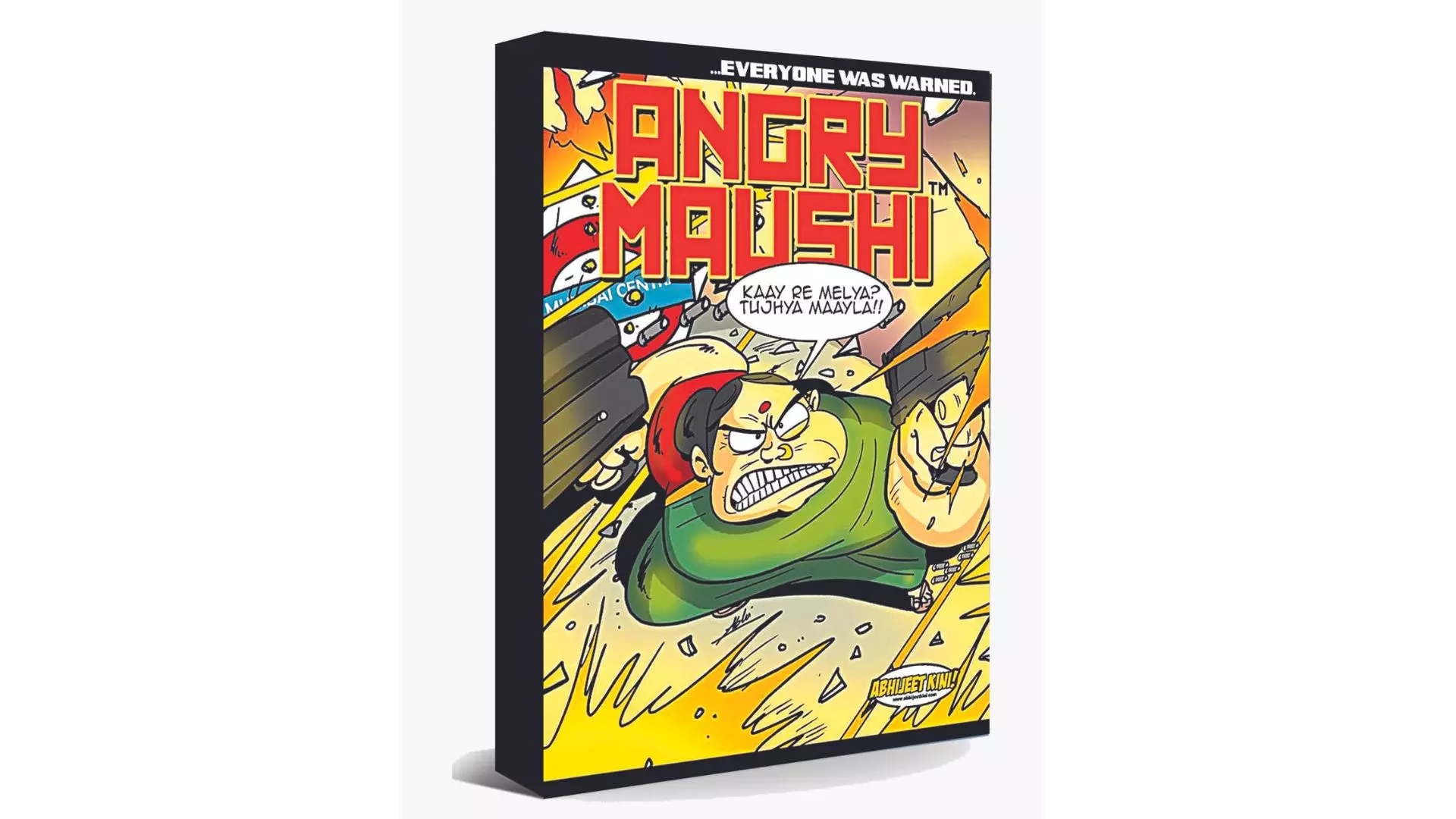Playing By The Book Comically

Comics cater to a broad audience from wide-eyed youngsters to seasoned comic book enthusiasts. While there is no concrete answer to what is the most suitable theme for all-ages comics, the stories often explore relatable themes. The visual storytelling format allows readers to grasp the narrative easily. Illustrations, pictures and dialogue boxes offer adventures for everyone, young and old. Angry Maushi by Abhijeet Kini is a delightful tale set in contemporary India taking a satirical stance on the socio-political culture of India, mainly Mumbai. Kini (42), an independent comic creator, animator and illustrator, who has been in this profession for 24 years, says, “The medium of comics is a sequential art and stories told in pictures. It is not a requisite that only one audience can consume it. The pictures probably show you more than what prose would have shown. The age bracket does not matter. It is unfair to make assumptions that it is only read by children. This perception is mostly in India.” Maushi aka Lakshmi turns vigilante (or vigil-aunty) who fights against local corruption and environmental threats, exhibiting the power that lies within ordinary people. This message resonates with readers of all ages.
Allure of Comics
Writer, editor, and comic journalist, CG Salamander (33), has written books like Moodunnit, Puu, City of Rubble and Maithili and the Minotaur series to name a few. He says, “My work is mostly based on folklore and mythology. It may appear that it deals with a specific issue but it is coincidental.” The graphic novel Maithili and Minotaur: Forest of Forgotten Fears is a folklore from the real-life Mathikettan Solai of Tamil Nadu. It is to say that if you enter this forest, you will forget everything about yourself, and you’ll be left wandering the woods till you die. This myth is the background of this book where the characters are lost in this forest and are confronted by their fears. He says, “It also plays as a metaphor for deforestation that you (humans) are not meant to enter the forest and deforest it as you like.”
Different Themes
One of the biggest shifts among young adults’ interest in comic books is the evolution in themes. Debasmita Dasgupta (44), an author, illustrator and film producer says, “The earlier idea of comic books to be comical and cartoonish is now changed. People now know that it is visual storytelling that can be done with different and difficult topics.” Terminal:3 by Debasmita Dasgupta is an inspiration taken from the real-life story of a Kashmiri kickboxer, Tajamul Islam and many other sportswomen like her in Kashmir. Set in August 2019, Khwab Nazir (the protagonist) is waiting to board the plane at Terminal 3 of New Delhi International Airport in August 2019 when Kashmir was under a strict lockdown due to the revocation of Article 370. Set to represent India at an international jiu-jitsu tournament, Khwab nervously looks towards her unknown future. The story mirrors the struggles of everyday people striving to fulfill their dreams in the Valley. Debasmita feels that the current generation is far more evolved and exposed to different formats. They can handle different kinds of reality.
Road to Connectivity
From the creator’s mind to the readers, the road to connectivity is often an exploration and not a destined route. Talking about the Angry Maushi series, Abhijeet says, “I was aware that I will be catering to a mature audience. The story is set in Mumbai filled with local settings and slang. So, when it was showcased in international comic con festivals, people were curious to see an Indian Nauvari vigilante taking charge and not set within the stereotyped body image.” The story of Puu by CG Salamander creates awareness of manual scavenging. He says that the metaphors keep you engaged in the world building of the book. It adds another layer with extra information. Puu, a Tamil word for flowers, is a story on manual scavenging. Salamander addresses it subtly by using flowers to tell the story. He says, “A topic like manual scavenging might be too serious for some and is even likely to escape a child’s mind but the same book can be interpreted from the lens of the girl being bullied and that can be relatable for someone.” India is advancing towards consuming multicultural content. Salamander, who is inspired by One Piece manga and considers it a masterclass, aspires to create a comic book that can be read multiple times and people would want to return to it even after years. As publishers look favourably towards this market, several parents also want their children to read books instead of watching or scrolling mindlessly on their phones. The habit of reading comic books is a fantastical entry into the world of reading for all age groups alike.
My idea is to create a comic book that can be read multiple times and people would want to return to even after years.” — CG Salamander, Writer and graphic novelist
The earlier idea of comic books to only be comical and cartoonish is now changed with wider scope of theme.”— Debasmita Dasgupta, author, illustrator and film producer
The age bracket does not matter. It is unfair to make assumptions that it is only read by children.” — Abhijeet Kini, independent comic creator, animator and illustrator

